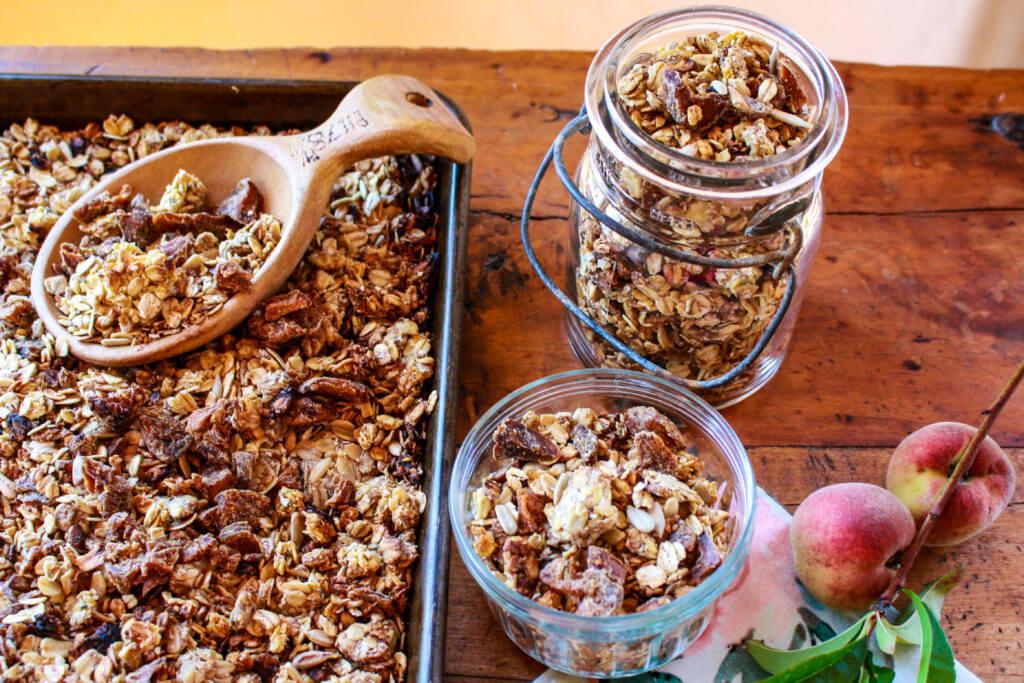Eating for Healthy Aging

Your daily food and activity choices can significantly lower your risk of developing chronic diseases. Dietitian Sharon Palmer shares her expert tips on how you can eat for healthy aging.
You might not be able to turn back the hands of time for every wrinkle and body ache, but you can certainly reduce your risk or delay the onset of chronic diseases associated with aging, such as heart disease, diabetes, cancer, and neurodegenerative diseases. Your daily food and activity choices can significantly lower your risk of developing such diseases, according to scientific evidence. Preventing these conditions can make the difference between living a long, vibrant life or a short life riddled with disease and disability.

Anti-inflammatory Eating
Particular foods and eating patterns are linked with lower levels of inflammatory biomarkers. This diet-inflammation connection might be one explanation for disease protection. While acute inflammation— your body’s natural reaction to an injury or assault, like stubbing your toe or getting a splinter in your finger—is a good thing, chronic inflammation is not. When the body’s inflammatory reaction fails to shut off, or becomes activated when there is no real trigger—sometimes lasting for days, months or even years—chronic inflammation results. This underlying inflammation is the root of many diseases, including heart disease, metabolic syndrome, type 2 diabetes, cancer, rheumatoid arthritis, and neurological degeneration such as Alzheimer’s disease. In fact, obesity itself is a pro-inflammatory state that can foster chronic diseases.
Andrew Weil, M.D., Director of Integrative Medicine at the University of Arizona, states that inflammatory status is strongly influenced by diet. “Most people go through life in a pro-inflammatory state, because they eat a modern, industrialized diet, which gives you carbohydrates and fats without all of the protective elements,” says Weil. He reports that a diet that includes protective foods, such as vegetables, fish and whole grains, offers anti-inflammatory benefits that promote healthy aging, and support optimum health at any age.

Optimal Diet Patterns
To reduce inflammation, follow a diet rich in whole foods, including carbohydrates such as whole grains and fruits, fats like nuts and avocados, and protein sources, such as soy foods and pulses. Include regular exercise and don’t smoke—lifestyle choices that seem to “cool down” inflammation, according to a review published in the Journal of the American College of Cardiology.

Healthy Aging in Every Bite
Scientists are also exploring the benefits of individual foods on inflammation, particularly berries, tomatoes, walnuts, spices, tea, extra virgin olive oil, and red wine, which appear to be especially promising. You can protect yourself from inflammation at every meal by loading up on anti-inflammatory foods. In a randomized trial published in the Journal of the American College of Nutrition, a strawberry beverage consumed with a high-fat meal blunted the inflammatory response of that meal. This effect has been seen with other powerful anti-inflammatory foods, such as tomatoes.
Your best bet to reduce disease risk is to include an array of plant foods in your diet in order to gain the benefits of their interactive and naturally occurring nutrients and phytochemicals which can tamp down chronic inflammation and promote optimal aging.
Healthy Aging Food Strategy
To reduce your risk of age-related chronic diseases and promote healthy aging, try these anti-inflammatory eating approaches:
1. Balance your calorie intake to maintain a healthy weight.
2. Load your diet with a variety of fruits and vegetables, in every color, size, texture, and shape to provide a range of nutrients and anti-inflammatory compounds.

3. Choose carbs that are less refined and high in fiber, such as unsweetened fruits, vegetables, and whole grains, including whole wheat, oats, quinoa, brown rice, bulgur, and barley.
4. Don’t over-do animal protein intake by consuming excessive amounts of red meat, poultry, eggs, and dairy products. If you eat animal foods, choose fish and seafood a couple of times per week as your main choice.

5. Include more plant proteins, such as beans, lentils, peas, soy foods (i.e. tofu, soy milk, edamame,) and nuts.
6. Select healthy fats like extra virgin olive oil, canola oil, nuts, and avocados. Minimize saturated fat from meats and dairy products and trans fat found in processed foods like French fries and snack foods.

7. Boost omega-3 fatty acids through sources such as walnuts, hemp, soy foods, chia, and flaxseed. If you eat a pescatarian diet, you can get omega-3s through seafood.
8. Flavor your foods with anti-inflammatory spices and herbs, such as garlic, green herbs, ginger, black or red pepper, and turmeric.

9. Drink green, white, or black tea (unsweetened) more often.

10. If you drink alcohol, enjoy red wine in moderation (one glass per day for women, one to two glasses per day for men.)
11. Enjoy antioxidant-rich dark chocolate (at least 70% cocoa) in small amounts (up to one ounce) as a treat.

12. Avoid foods that are refined, overly processed, and low in nutrients, such as those made with white flour, sugars, and refined oils, including donuts and sugary cereals.
For other tips on eating a diet for healthy aging, check out the following:
Prevent Muscle Loss in Aging
A Plant-Based Diet for Healthy Aging
Fueling Plant Protein and Activity to Help Preserve Muscles During Aging
Image: Breakfast Tempeh Salad from my new book California Vegan
This post may contain affiliate links. For more information, click here.


